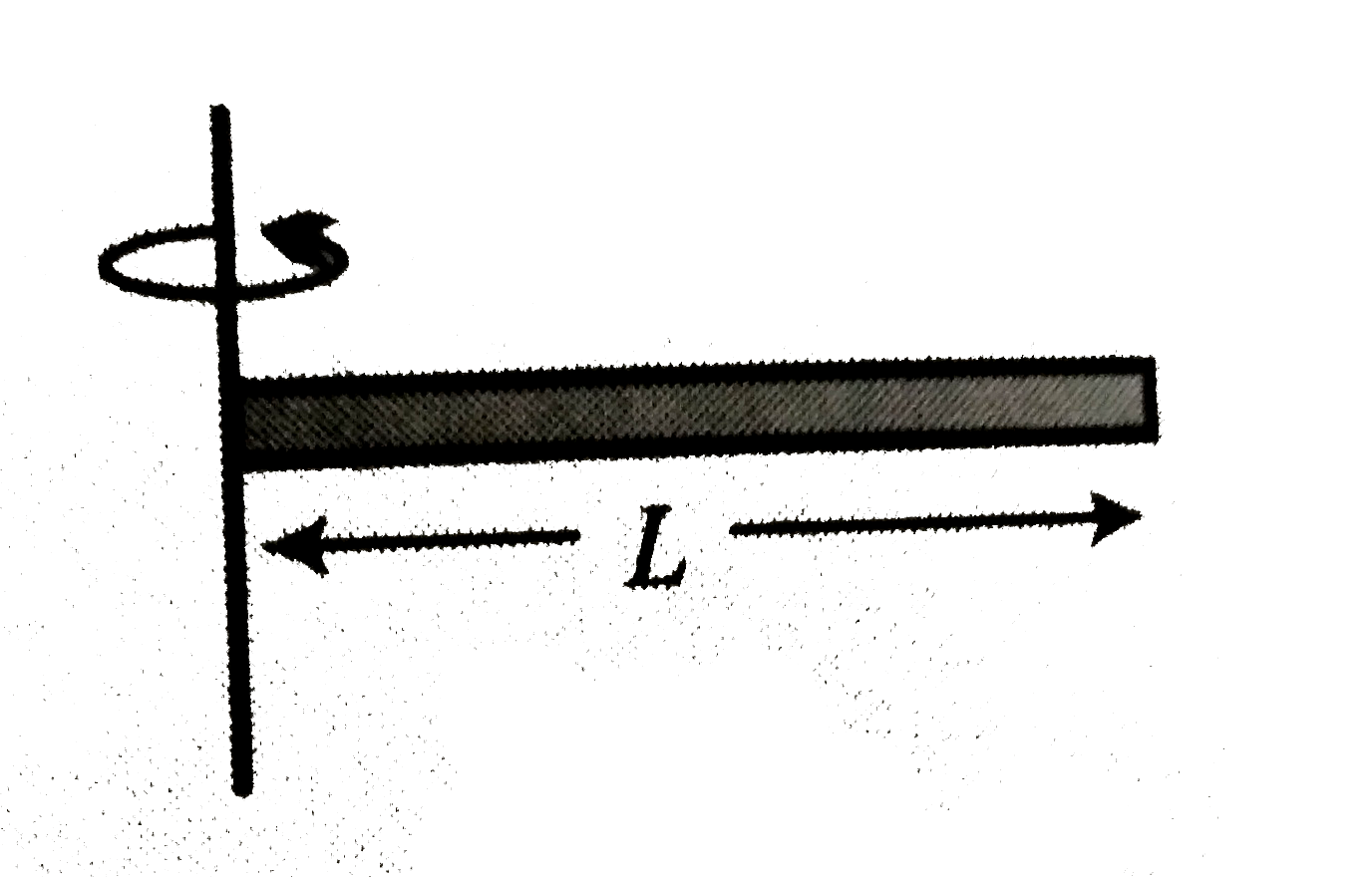A tube of length L is filled completely with an incomeressible liquid of mass M and closed at both the ends. The tube is then rotated in a horizontal plane about one of its ends with a uniform angular velocity ω. The force exerted by the liquid at the other end is
As is know, in rotational motion, angular velocity ω remains constant for all segments of the liquid in the tube.
∴ Force exerted by the liquid at the other end
=Force required for rotational motion
F=mrω2 ….(i)
Consider a small element of the liquid of length dx at a distance x from the centre,
Mass of this element of the liquid
m=MLdx,r=x
∴dF=mrω2=(MLdx)xω2
F=MLω2∫L0xdx=MLω2[x22]L0
F=MLω2(L22)=12Mω2L
Topper's Solved these Questions
- SYSTEMS OF PARTICLES AND ROTATIONAL MOTIONBook:PRADEEPChapter:SYSTEMS OF PARTICLES AND ROTATIONAL MOTIONExercise:NCERT
Explore 21 Videos
- SYSTEMS OF PARTICLES AND ROTATIONAL MOTIONBook:PRADEEPChapter:SYSTEMS OF PARTICLES AND ROTATIONAL MOTIONExercise:ADDITIONAL EXERCISES
Explore 11 Videos
- SYSTEMS OF PARTICLES AND ROTATIONAL MOTIONBook:PRADEEPChapter:SYSTEMS OF PARTICLES AND ROTATIONAL MOTIONExercise:SOLVED EXAMPLES TYPE E
Explore 1 Video
- RAY OPTICSBook:PRADEEPChapter:RAY OPTICSExercise:Problem For Practice(a)
Explore 25 Videos
- THERMODYNAMICSBook:PRADEEPChapter:THERMODYNAMICSExercise:Assertion- Reason Type Questions
Explore 19 Videos
Similar Questions
A tube of length L is filled completely with an incompressible liquid of mass M and closed at both ends . The tube is then rotated in a horizontal plane about one of its end with a uniform angular velocity ω . Find the force exerted by the liquid at the other end .
View SolutionA tube of length L is filled completely with an incompressible liquid of mass M and closed at both the ends. The tube is then rotated in a horizontal plane about one of its ends with a uniform angular velocity ω. Determine the force exerted by the liquid at the other end.
View Solution
Knowledge Check
A tube of length L is filled completely with an incompressible liquid of mass M and closed at both the ends. The tube is then rotated in a horizontal plane about one of its ends with, a uniform angular velocity co. The force exerted by the liquid at the other end is
AMω2l/2BMω2lCMω2l/4DMω2l2/2A tube of length L is filled completely with an incompressible liquid of mass M and closed at both ends. The tube is then roted in a horizontal plane about one of its ends with a uniform angular velocity ω The force exerted by the liquid at the other end is
AMLω22BMLω2CMLω24DML2ω22A tube of length 'L' is filled completely with an in compressiblem liquid of mass 'M' and closed at both ends. The tube is then rotated in a horizontal plane about one of it's ends with a uniform angular velocity 'ω'. Then which of following statements are true :
AThe force exerted by liquid at the other end is 12Mω2LBRatio of force at middle and point of the tube will be 4:1CThe force between liquid layers linearly with the distance along the lenghth of tubeDForce is constant
Atube is completely filled with some incompressible liquid having total mass m. Length of the tube is L. Tube is rotated in horizontal plane, about one of its ends and force exerted by the tube on liquid on the other end is found to be 1nmLω2. Here ω is uniform angular velocity of tube. Calculate the value of n.
View SolutionA rod AB of mass m and length L is rotating in horizontal plane about one of its ends which is pivoted. The constant angular speed with which the rod is rotating is ω. The force applied on the rod by the pivot is
View SolutionA uniform of mass m and length L is tied to a vertical shaft. It rotates in horizontal plane about the vertical axis at angular velocity ω. How much horizontal force does the shaft exert on the rod?

View SolutionA tube one metre long is filled with liquid of mass 1 kg. The tube is closed at both the ends and is revolved about one end in a horizontal plane at 2 rev/s. The force experienced by the liquid at the other end is
View SolutionOne end of a uniform rod of mas m and length l is clamped. The rod lies on a smooth horizontal surface and rotates on it about the clamped end at a unifrom angular velocity ω. Theforce exerted by the clamp on the rod has a horizontal component
View Solution
